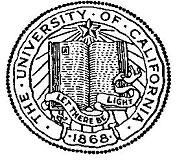
|
IN MEMORIAM
IN MEMORIAM
George G. Laties
Professor of Molecular, Cell and Developmental Biology, Emeritus
Los Angeles
1920—2002
When George G. Laties died on January 28, 2002, UCLA lost not only a long-time friend and colleague, but a highly respected plant biologist who influenced several generations of young scientists.
George joined the Department of Subtropical Horticulture in the College of Agriculture at UCLA in 1959. George had started his career in agriculture, even though he grew up in New York City. He and his family originated in Sevastopol Russia, but they came to the U.S. when George was a very young child. He earned a B.S. degree from Cornell University in 1941 and a M.S. in plant physiology and biochemistry in 1942 with Stacy French at the University of Minnesota. He started his Ph.D. studies at UC Berkeley, but World War II intervened. After serving in the U.S. Navy as a radar technician on a minesweeper, George resumed his Ph.D. studies at Berkeley under the guidance of Dennis Hoagland. From there, he went to Caltech and did postdoctoral studies with James Bonner as part of a group of young and dynamic plant biologists that included Sam Wildman (UCLA) and Art Galston (Yale). While at Caltech, George discovered that plant mitochondria could respire in the presence of cyanide. This discovery of an alternative oxidase, which was cyanide-resistant and subsequently found only in plants and fungi, has been one of the cornerstones of modern plant physiology. After Caltech, George spent several years at the University of Michigan and also received a Rockefeller Foundation Fellowship to study in England.
When the College of Agriculture moved from UCLA to UC Riverside, George joined the Department of Botany, and later the Department of Biology, which eventually split into two departments, one of which was MCD Biology. He rapidly moved through the academic ranks at UCLA, advancing to professor in 1963. He was also well recognized in the plant biology community. He was to serve as the president of the American Society of Plant Physiology in 1966, having been the vice president the year before. However, in 1966, he was awarded a Guggenheim fellowship and enjoyed a year as a fellow in the biochemistry section of the CSIRO in Canberra, Australia, working on salt transport, another one of his scientific interests. His studies in plants later expanded to post-harvest physiology and particularly the effects of the plant hormone ethylene on the ripening of a diversity of fruits and vegetables, including avocado. George was able to combine classical plant physiology with molecular concepts and methodologies.
George served on a number of committees during his time at UCLA, and was deeply interested in faculty issues and policies. He was well known for his firm commitment to democratic politics and his eloquent support of liberal causes. George’s love of the English language was known to all who encountered him, as was his love of dogs, cows, and hikes in the Santa Monica Mountains. George was an active environmentalist supporting the Sierra Club, Nature Conservancy, Defenders of Wildlife, and the World Wildlife Fund. He and his wife Betsy for many years supported dog rescue groups and adopted several abandoned rottweilers. His home was open to all, especially former students and postdoctoral associates and beginning UCLA faculty. Many UCLA newcomers found that George was in their “corner”; he enthusiastically supported the work of younger colleagues and helped them learn about the ins and outs of UCLA, an institution that he firmly believed had the best environment for scholarly success. His zeal for research was infectious and it extended into his teaching. His objective in teaching was to help the students develop their curiosity, to look beyond the textbook and the lab manual.
He is survived by his loving wife of 54 years, Betsy, his brothers, Dr. Victor Laties of Rochester, NY, Dr. Alan Laties of Philadelphia, PA, and David Laties of Kingston, NY. In addition, there are numerous scientists who were influenced by George’s care and mentoring and his passion for science. We all miss him terribly.
Ann M. Hirsch